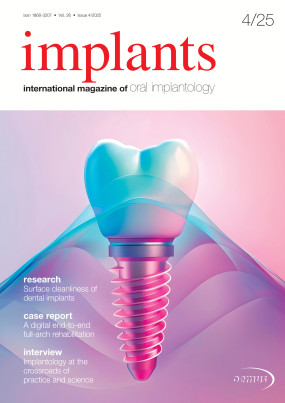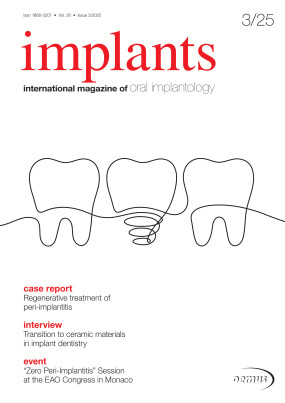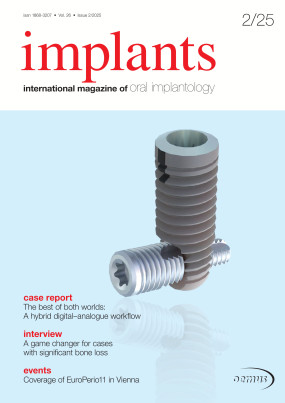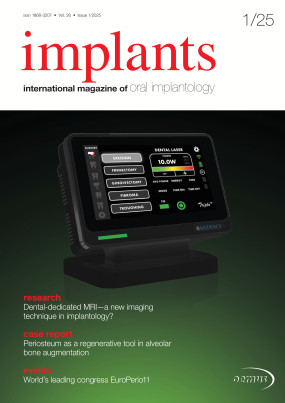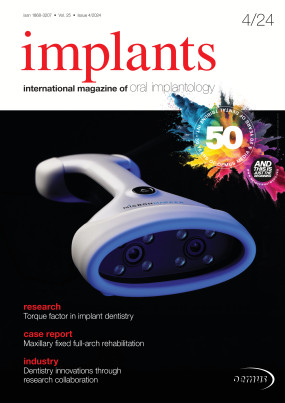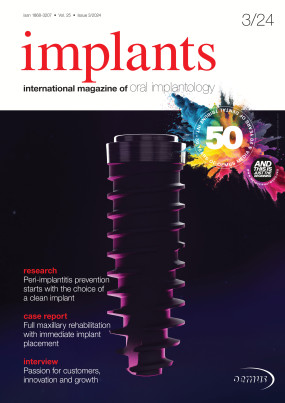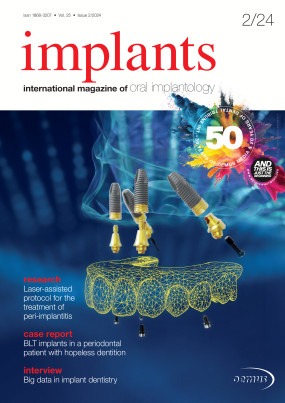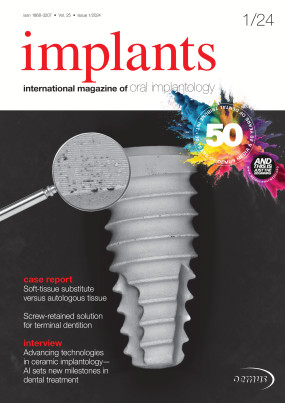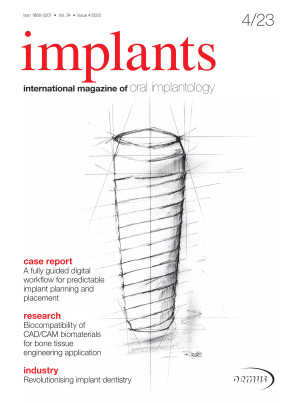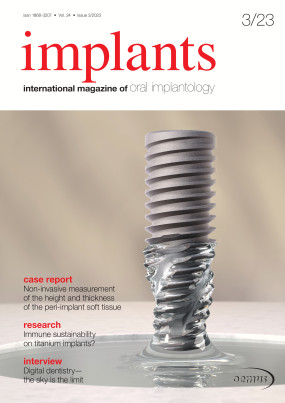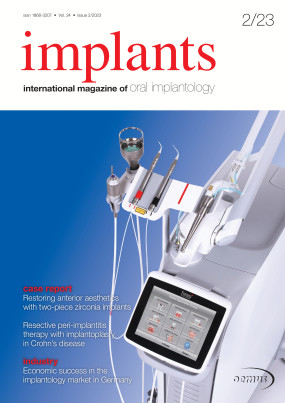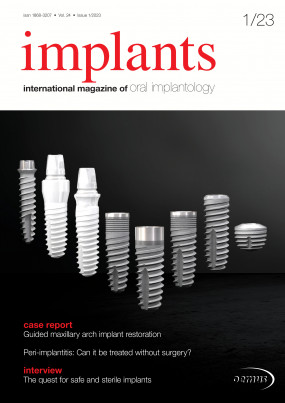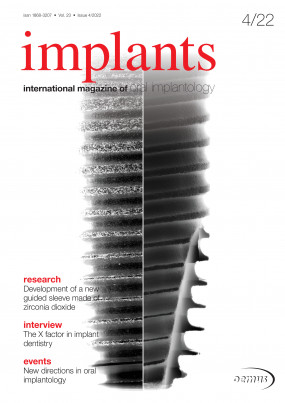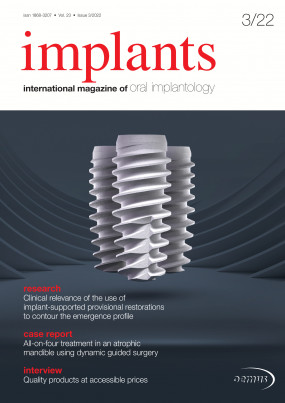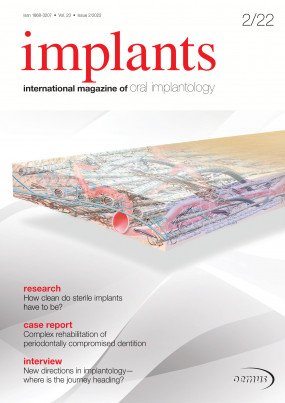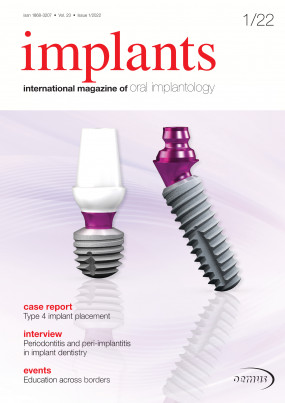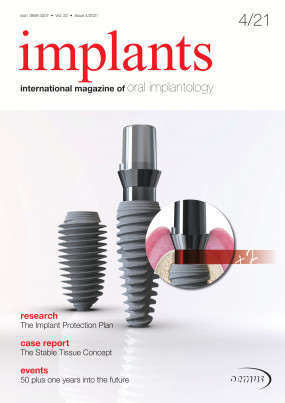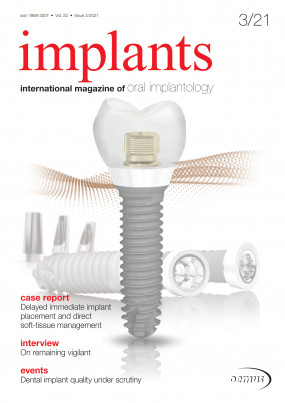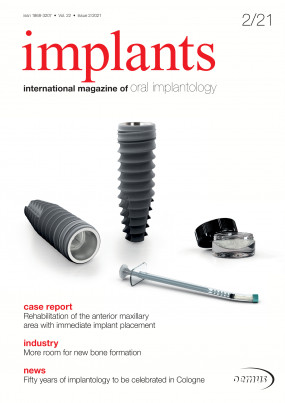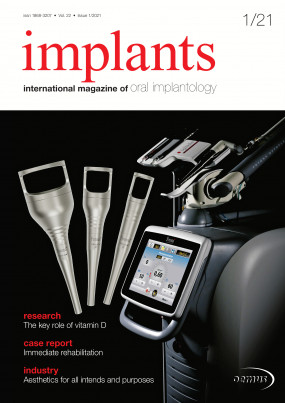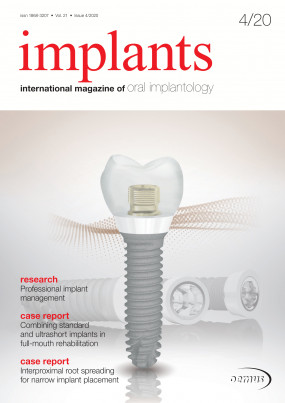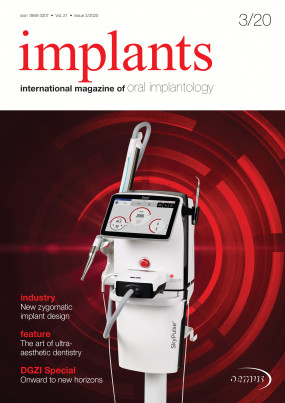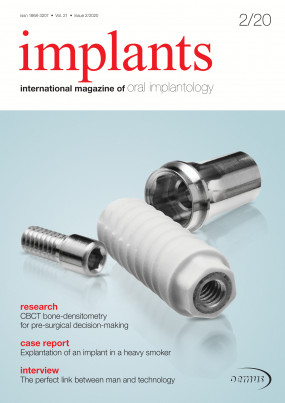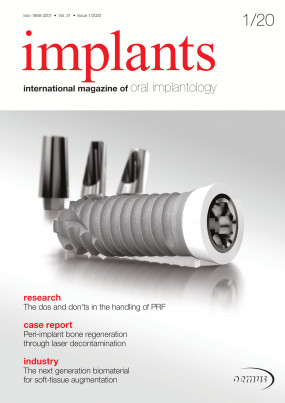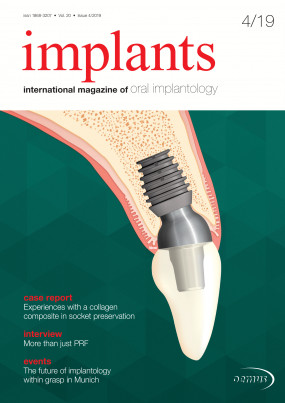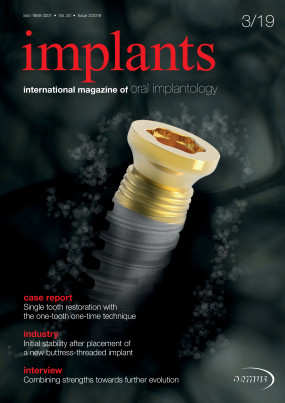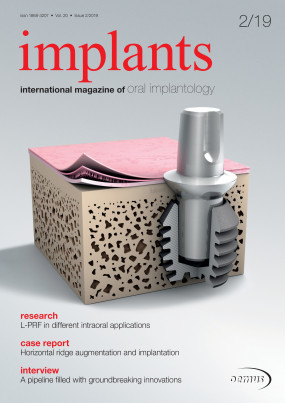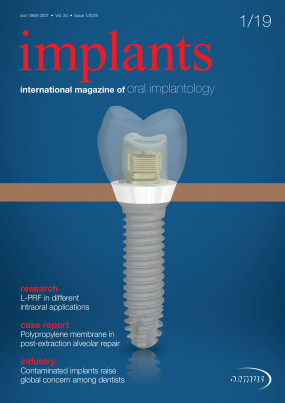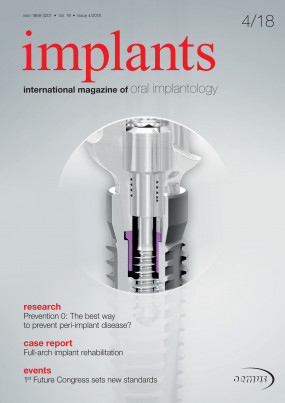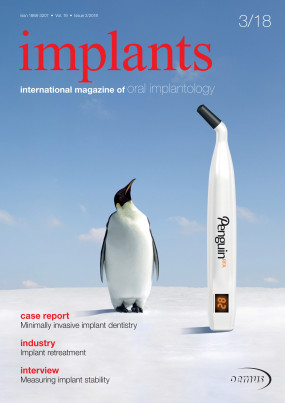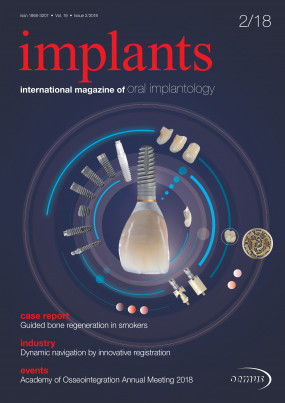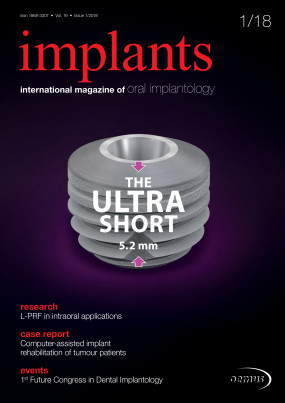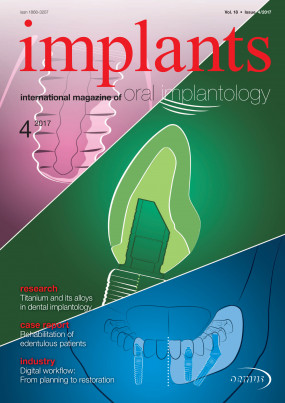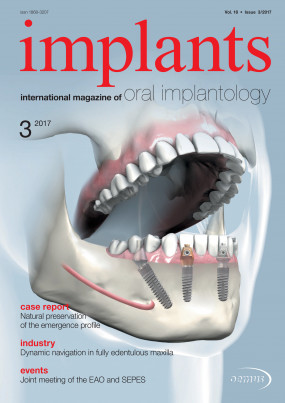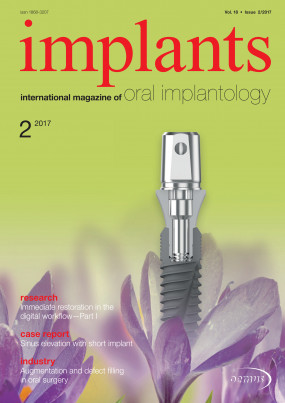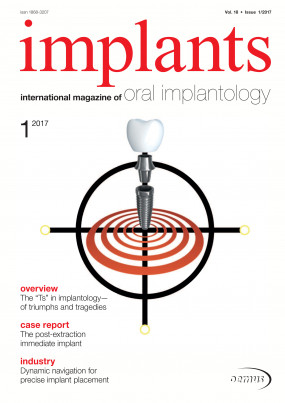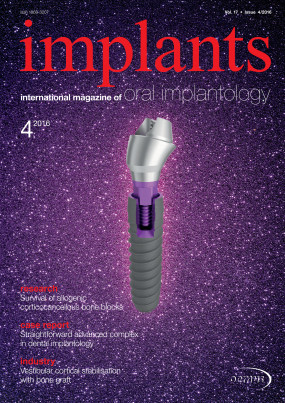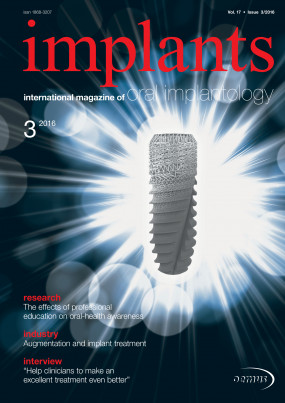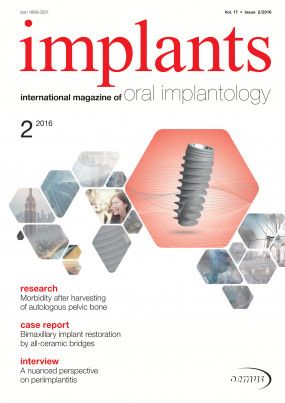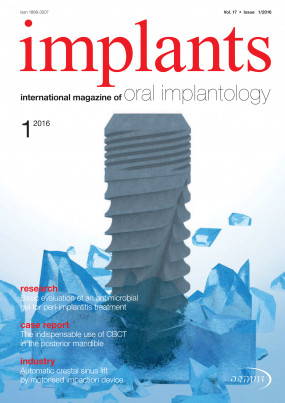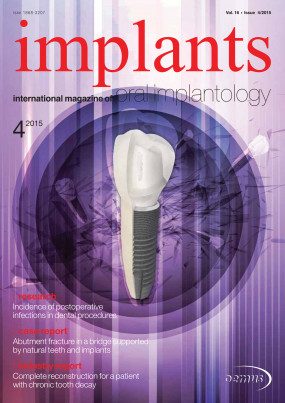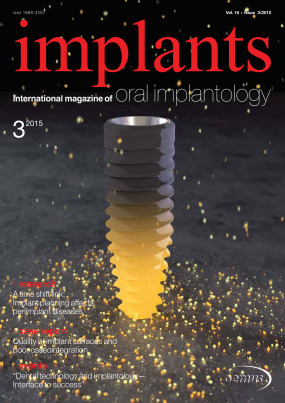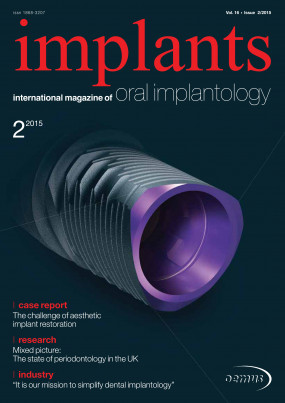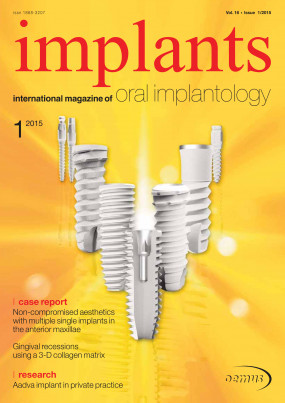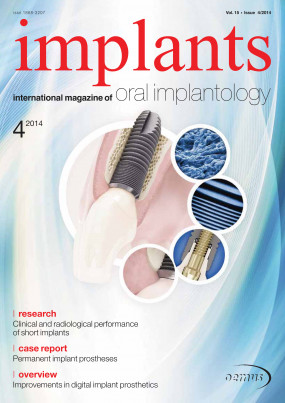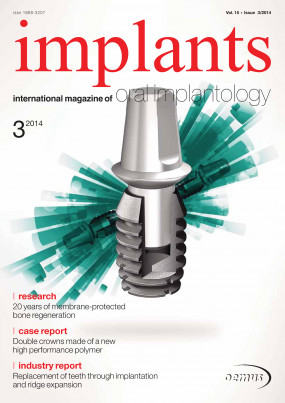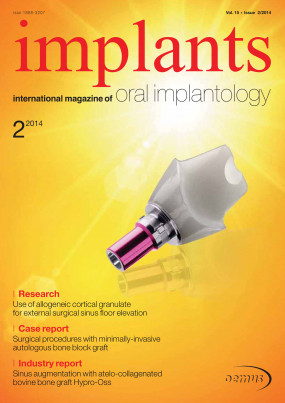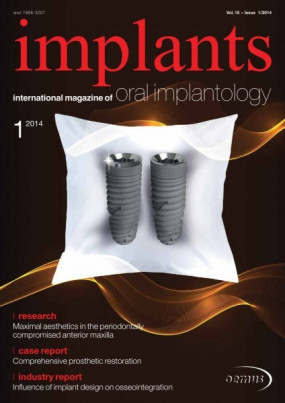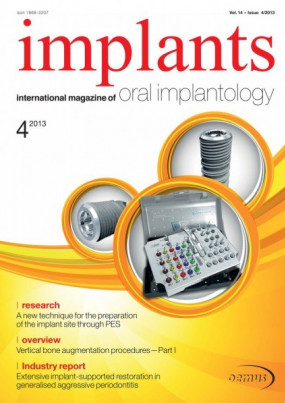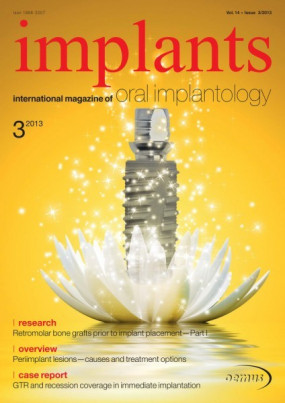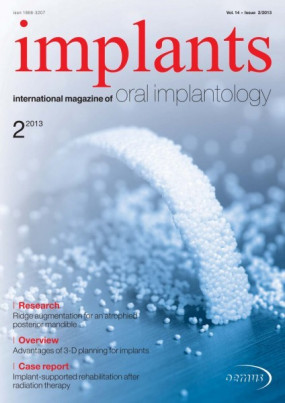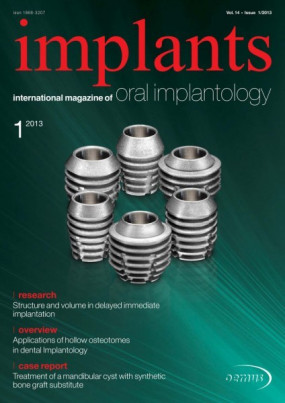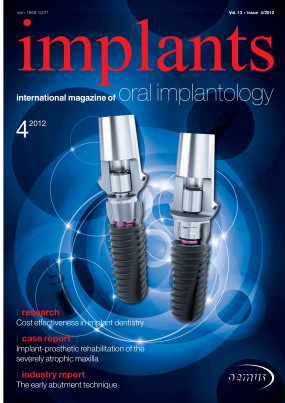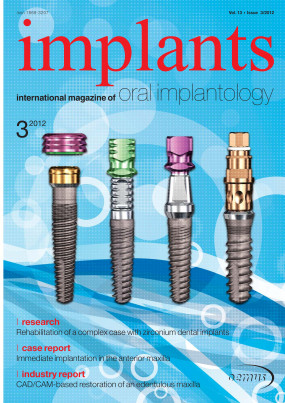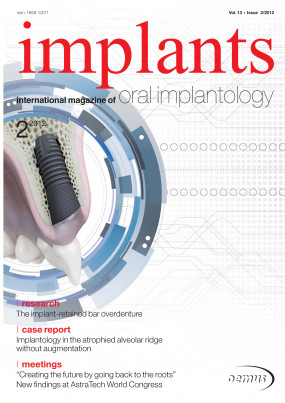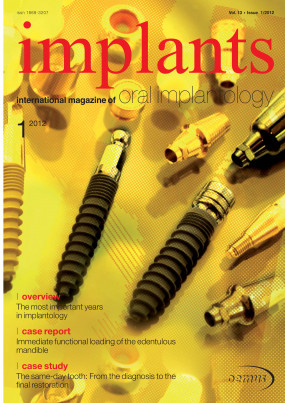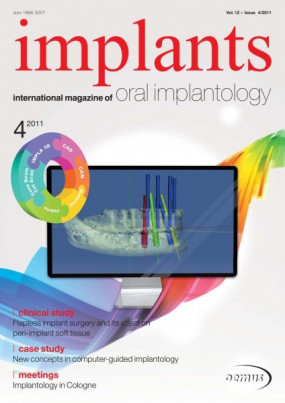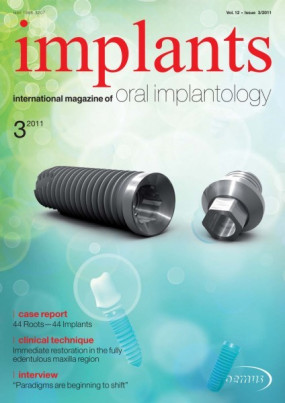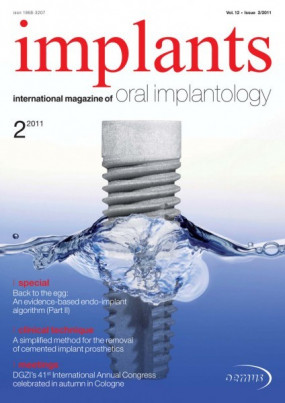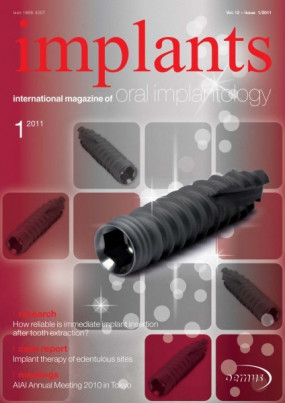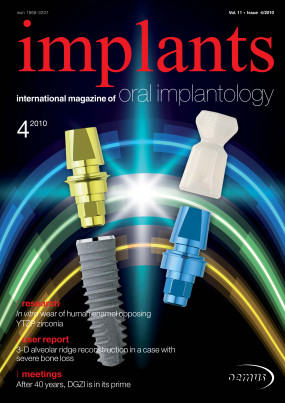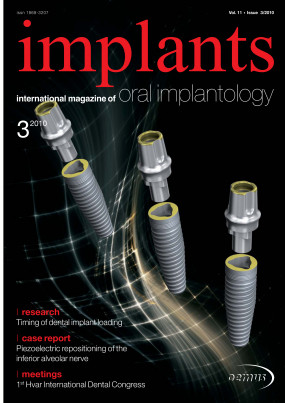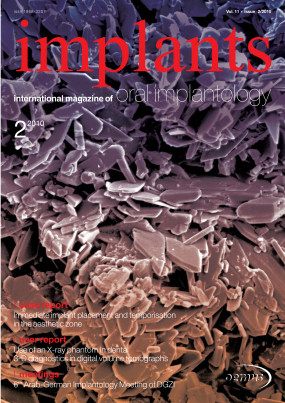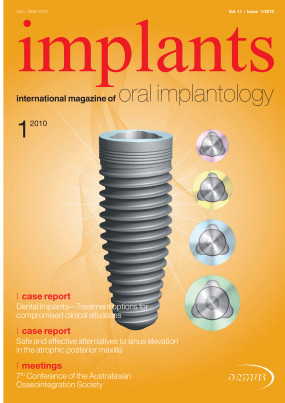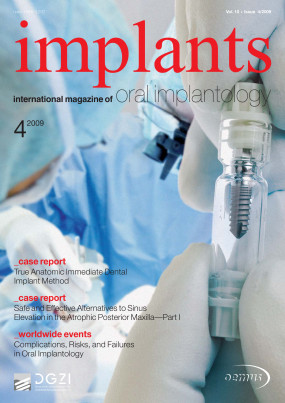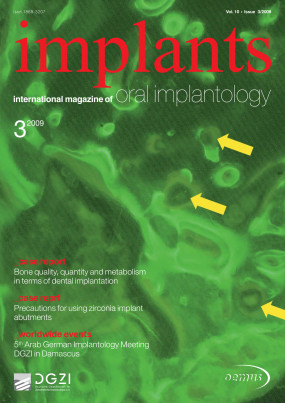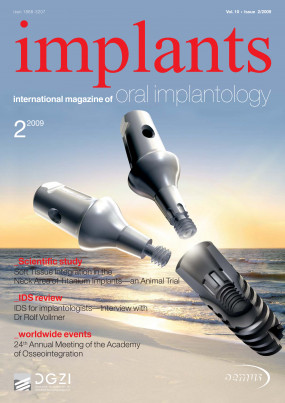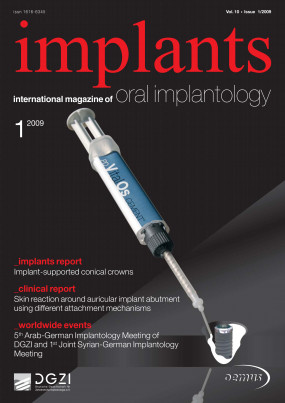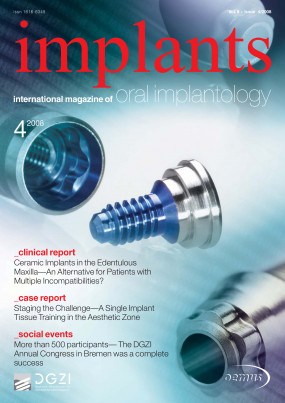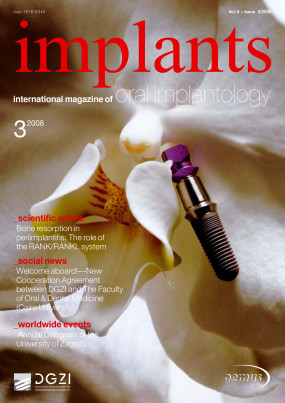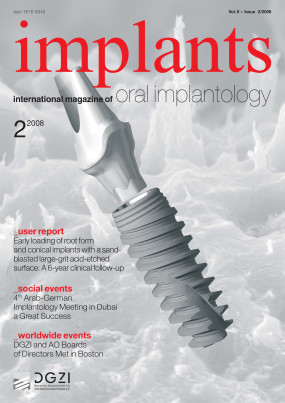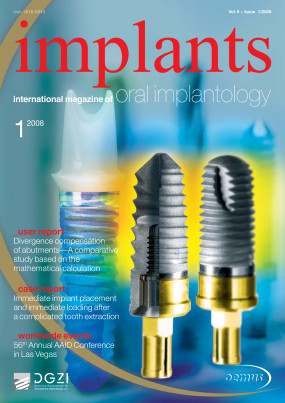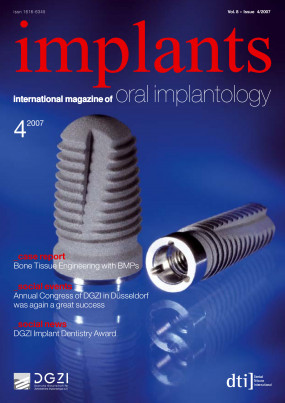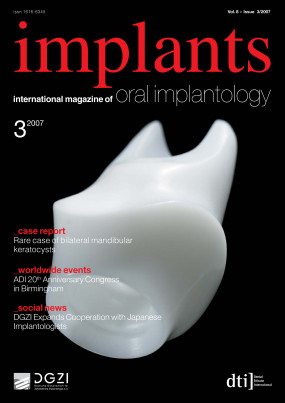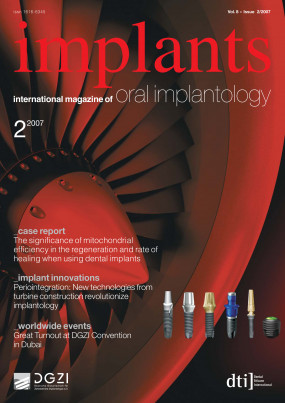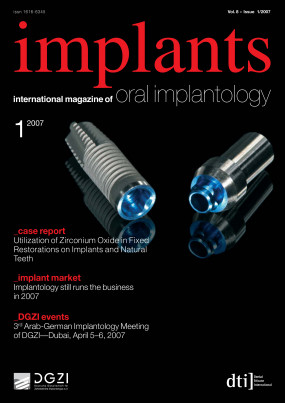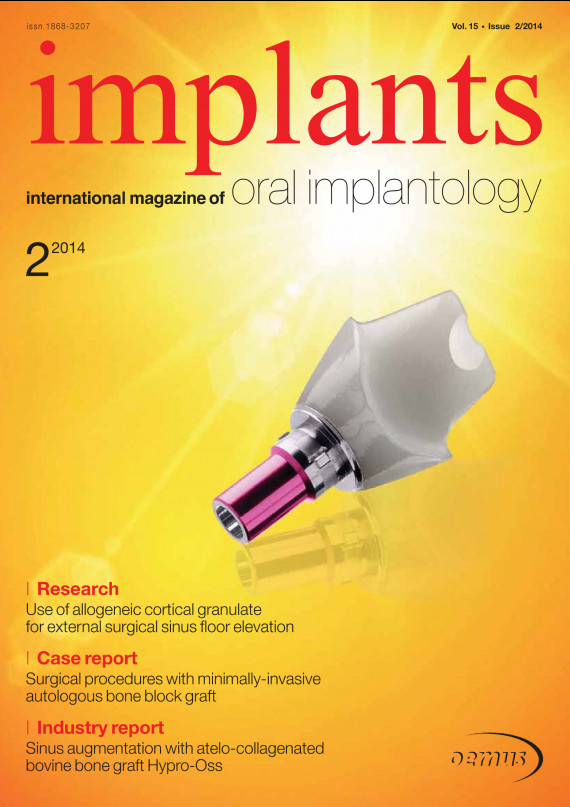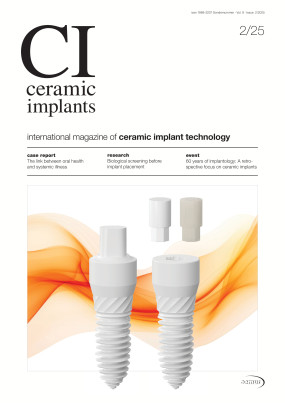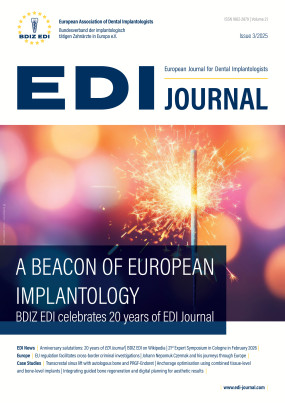Inhaltsverzeichnis
3
If you are one of those who want to include field-tested and innovative implantological treatment concepts to your office and, furthermore, you wish to learn about the decisive criteria for practical techniques and materials, I am sure we will see each other at the 44th International Annual DGZI Congress on 26 and 27 September 2014 in Düsseldorf, Germany. We chose this special congress venue as Düsseldorf forms the international centre of an innovative region with a high entertainment factor.
6
Injectable bone substitute based on b-TCP granules - Results from an in-vivo analysis in Wistar rats
M. Barbeck, J. Lorenz, C. Landes ,R.A. Sader, C.J. Kirkpatrick & S. Ghanaati, Germany
In the recent years biomaterial research has focused on developing a reliable and safe alternative to autologous bone for augmentation in case of a reduced local bone amount. As autologous bone has osteoinductive, osteoconductive and osteogenic properties, it is postulated to be the gold standard in peri-implant hard tissue augmentation.1 Xenogenic bone substitutes, originating from animals of different species and processed in different steps, are well researched and accepted from both surgeons and patients.2 Alloplastic bone substitutes from synthetically manufactured hydroxyapatite (HA), beta-tricalcium phosphate (b-TCP) or a mixture of these two compounds have been reported to be biocompatible, degradable and osteoconduktive.3-7
14
Use of allogeneic cortical granulate for external surgical sinus floor elevation
Dr Phillip Wallowy & Dr Karam Kass-Elias, Germany
This study aimed to assess the effectiveness of external sinus floor elevation in 36 patients with severely atrophic posterior maxillae using allogeneic freeze-dried cortical granulate (Osteograft®, ARGON Medical). Implants were placed in a second session after a mean time of 7.6 months. As the study shows, the use of allogeneic cortical granulate in external sinus augmentation showed successful clinical results combined with great properties. It seems to be a reliable material for reconstruction of a severely atrophic posterior maxilla. It presents a good alternative to autogenous bone in sinus augmentation because of good ossification, less morbidity, unlimited availability, shorter duration of surgery as well as lower costs...
20
Have you already performed lots of full-mouth restorations? Do you always know immediately what the optimal solution is? The majority of dentists, in all honesty, answer ‘no’ to these questions, since patients seldom have only an isolated problem. Uncertain prognosis for existing teeth, poor oral hygiene or oral and systemic comorbidities can make choosing the right treatment a real challenge. Here, extensive clinical knowledge is called for. With the new e-learning platform Dental Campus, you can extend your clinical knowledge with the help of case studies of varying complexity. Benefit from the experiences of other clinicians, discuss cases with your peers and collect continuing medical education credits at the same time, regardless of time or place. Dental campus contains numerous, uniformly structured case studies. From the initial findings to the maintenance therapy treatments, you can follow all details step-by-step. Thanks to interactive platform features, you can discuss each treatment step with the dentists who actually treated the patients as well as with other practitioners in the forum. In the following, we present a Dental Campus case with a highly complex initial situation...
24
Optimized implant planning: DICOM-STL matching
Dr Frank Schaefer, Dr Dagmar Schaefer & Dr Mike Zäuner, Germany
On the basis of three-dimensional X-ray images, in the 1990s the first software programmes allowed a navigated insertion of dental implants. But the digitisation of dental processes started even earlier, namely in the mid-1980’s. Imaging techniques allowed the production of components based on virtual construction. Today, this principle is well established both in the dental-clinical field and especially in the dental laboratory. Meanwhile, 3-D data sets of objects are created not only by normal camera shots, but there are also special 3-D scanners in use. In particular, today’s desktop scanners are so precise in their resolution accuracy that they are able to exactly reflect the real model or oral situation...
32
Surgical procedures with minimally-invasive autologous bone block graft - Including a tomographic analysis after 48 months
Prof. Dr Sergio Alexandre Gehrke, Brazil
Autologous bone blocks were combined with a synthetic tricalcium phosphate (TCP) bone graft substitute to reconstruct the alveolar ridge in the region of the maxillary left canine. On re-opening for implant placement, the majority of the bone graft substitute had been replaced by newly formed bone and the bone blocks, although still discernible from the surrounding hard tissue, had been integrated into the host bone. Four years after surgery, the site was evaluated using CBCT. The results demonstrated preservation of the height and volume of the grafted area...
36
Xenograft materials are widely used for sinus augmentation and guided bone regeneration for increasing the availability of bone for optimal implant placement and reconstruction of bone defects. Atelo-peptidation of Hypro-Oss is an enzymatic process that is used to eliminate the antigenic telo-peptide sequence of the bovine collagen chain in the bone granules and thus eliminates the immune response by using the atelo-collagenated bovine bone graft in augmentation procedures in humans. The non-immunogenic bovine collagen (atelo-collagen) goes through the process of lyophilization, which is a process of dry-freezing using sublimation that directly converts the freezed water in HYPRO-OSS ™ to vapor without passing through the intermediate liquid phase...
40
Following previous investments in Brazil, Germany and Spain, Straumann recently announced that it has bought convertible bonds worth US$30 million from MegaGen, one of the largest dental implant solution providers in South Korea. At the recent World Symposium of the International Team for Implantology in Geneva in Switzerland, on behalf of Dental Tribune Asia Pacific, implants magazine Managing Editor Georg Isbaner had the opportunity to talk to Frank Hemm, a member of Straumann’s executive management board, about the investment and how it will affect his company’s position in the Asia Pacific region.
44
Biggest international implant dentistry meeting to date - ITI World Symposium 2014 with 4,200 participants
Redaktion
The International Team for Implantology (ITI), a leading academic organization dedicated to the promotion of evidence-based education and research in the field of implant dentistry, welcomed more than 4,200 participants from 84 countries to its global flagship event, the ITI World Symposium. Held under the heading “Knowledge is key”, the meeting took place in Geneva, Switzerland, between April 24 and 26, 2014...
46
_On the subject “Avoiding augmentative measures by application of short implants”, an international symposium for implantology was held. The event took place in the picturesque tourist town Taormina/Italy on 26 April 2014. More than 120 implantologists from eleven countries met for the symposium in Sicily. Scientific head of the event was Prof. Dr Mauro Marincola/Rome, Italy...
47
The 6th Swiss Biomaterial Days, which took place on 9 and 10 May 2014 in Lucerne, were dedicated to future-oriented, minimally invasive treatment concepts. Located on the northwestern tip of Lake Lucerne, the event provided its 150 participants from all over Europe with a complex scientific programme and top-level speakers...
